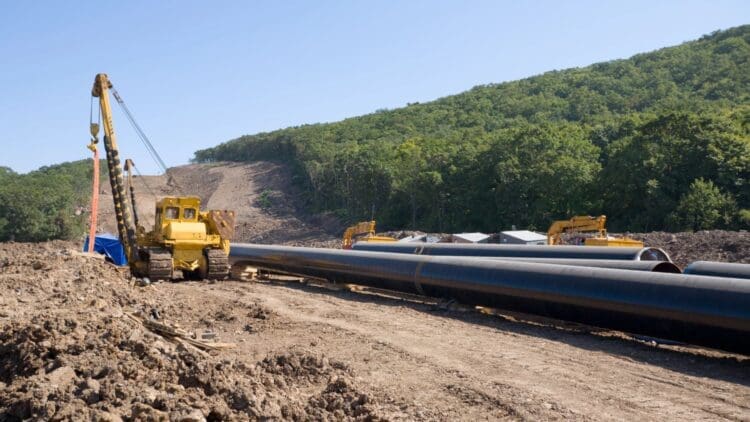As the global community imposes sanctions on Russia following its invasion of Ukraine, reports have emerged that state the Russia-China gas pipeline expansion may take up to ten years to complete. Both Russia and China are member states of the BRICS organization, and have recently been leaning on each other to develop a massive gas pipeline between the two energy-rich nations. As the vast majority of the world opts to integrate the renewable energy sector, gas will continue to play a crucial role in the region between Russia and China.
China and Russia are ramping up the progress of the Power of Siberia 2 pipeline
Reports from industry insiders have noted that the Power of Siberia 2 pipeline is moving forward as China and Russia have reached a critical juncture following years of stalled negotiations.
Russian energy giant Gazprom PJSC has stated that it has signed a “legally binding” memorandum with China National Petroleum Corp. to build the Power of Siberia 2 pipeline that spans thousands of miles. While Russia has publicly stated that the deal is moving forward, China has yet to confirm the details of the deal.
If the project moves forward, the overarching consensus is that it would deepen the already friendly relationship between the two countries, which are neighbors, we might add. For Russia, the project could alleviate the pressure being put on the nation’s economy via a vast array of international sanctions that have come into effect due to the Russian invasion of Ukraine.
For China, the optics of the project offer the nation the opportunity to strengthen its midstream operations in the gas sector. In recent years, the United States has leapfrogged China to become the world’s biggest exporter of the superchilled, seaborne fuel.
While the project’s potential is undeniable, the time frame for completion has revealed a decade’s decade-long wait
The CEO of Gazprom has noted that the planned Power of Siberia 2 pipeline network across Russia, China, and Mongolia is “the largest, the most massive and capital-intensive gas project in the world.” And his seriousness is evidently clear.
The Power of Siberia 2 pipeline stretches from its origin point in the Arctic Circle, 4,000 kilometers to the opposite end in China’s coastal megacities. Once operating at full capacity, the project will be able to transport 50 billion cubic meters of gas annually. The global midstream sector is facing significant bottleneck issues as gas turbine supplies are delayed.
Industry experts warn of an exceedingly long wait for the project to reach full capacity
An industry insider has noted that even if the deal between Russia and China is finalized in 2026, construction of the Power of Siberia 2 pipeline network could take up to five years to complete, with another five years needed to reach full capacity.
What is more troubling is the fact that Gazprom has stated that, assuming gas flows begin in 2031, the Russian energy giant does not expect the pipeline to reach half of its capacity before 2034-35. The “legally binding” agreement between the two nations provides a lifeline to the Russian gas sector as the nation grapples with the expanding international sanctions placed on it.
The reliance on the gas sector will be with us for the foreseeable future
The majority of the world’s high-usage countries have opted for the potential that the renewable energy sector presents. That approach is commendable, but it does not reduce the standing of the conventional non-renewable energy sector. The UAE has noted its plans to ramp up spending across the midstream and downstream sectors to upgrade capacity. So the evidence suggests that the good old reliable gas sector is not going anywhere, despite the global proclivity for the renewable energy sector.





